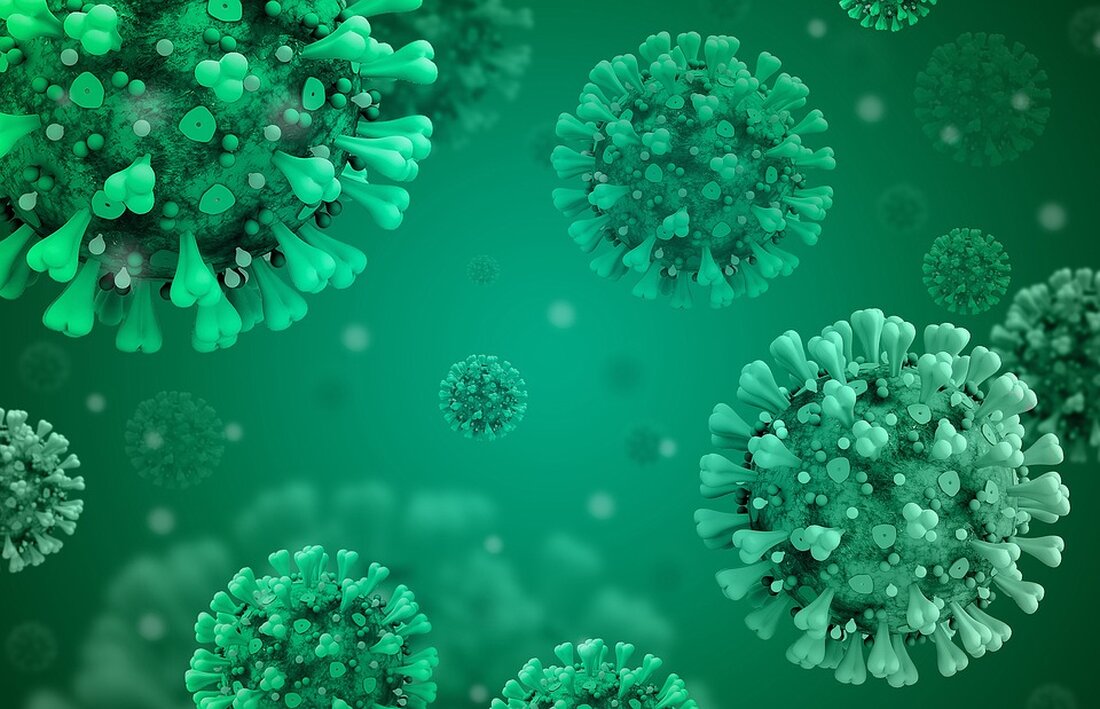Lyme disease: symptoms and treatment
Lyme disease: symptoms and treatment Lyme disease is a common tick-borne infectious disease caused by the bacterium Borrelia burgdorferi. It can lead to a variety of symptoms affecting different organ systems. In this article, we will take a detailed look at the symptoms and treatment of Lyme disease. Symptoms of Lyme disease The classic signs of acute Lyme disease are the so-called “erythema migrans” (EM) and flu-like symptoms. EM is a reddish rash that spreads in a circle around the site of the tick bite. It often occurs within 3 to 30 days of the bite and can be a size...

Lyme disease: symptoms and treatment
Lyme disease: symptoms and treatment
Lyme disease is a common tick-borne infectious disease caused by the bacterium Borrelia burgdorferi. It can lead to a variety of symptoms affecting different organ systems. In this article, we will take a detailed look at the symptoms and treatment of Lyme disease.
Symptoms of Lyme disease
The classic signs of acute Lyme disease are the so-called “erythema migrans” (EM) and flu-like symptoms. EM is a reddish rash that spreads in a circle around the site of the tick bite. It often occurs within 3 to 30 days of the bite and can reach several centimeters in size. The rash is usually painless and does not itch.
In addition to erythema migrans, other early symptoms may occur, such as fever, headache, muscle and joint pain, and fatigue. However, these flu-like symptoms can also occur without the characteristic rash.
If the infection is left untreated or not detected in a timely manner, later symptoms may develop, which may appear several weeks to months after the tick bite. These include recurring headaches, joint pain (especially in the knee area), neurological problems such as paralysis or muscle weakness in the face and cardiac arrhythmias.
In rare cases, Lyme disease can also spread to the nervous system, eyes, and other organs. Symptoms can range from memory loss and confusion to vision problems and cardiovascular disease.
It is important to note that not every tick bite results in a Borrelia burgdorferi infection. Only a small percentage of people bitten by ticks actually develop Lyme disease.
Diagnosis of Lyme disease
The diagnosis of Lyme disease is based primarily on the patient's observed clinical symptoms as well as a thorough history of his or her exposure to ticks. The presence of the characteristic erythema migrans or other early skin symptoms can be a clear indication.
If Lyme disease is suspected, various laboratory tests can be performed to detect antibodies to the bacterium Borrelia burgdorferi. These include the ELISA test (enzyme-linked immunosorbent assay) and, if the result is positive, the western blot test for confirmation.
However, it is important to note that these tests are not always conclusive and false-negative results can occur, especially in the early stages of infection. Therefore, the diagnosis should always be based on a thorough evaluation of all clinical signs as well as the medical history.
Treatment of Lyme disease
Lyme disease is usually treated with antibiotics. The choice of antibiotic and the duration of treatment depend on various factors, such as the stage of the disease and the presence of accompanying symptoms or complications.
In most cases, oral antibiotics such as doxycycline, amoxicillin or cefuroxime are used to combat the Borrelia infection. These medications have been shown to be effective in killing the bacteria and stopping the progression of the disease.
In advanced forms or more severe symptoms, intravenous antibiotic therapy may be required. The antibiotic is injected directly into a vein to achieve higher concentrations in the body.
The duration of treatment varies depending on the stage and severity of the disease. In the early stages, two weeks of treatment may be sufficient, while in late stages or more severe manifestations, longer periods of therapy of several weeks may be necessary.
It is important to note that despite adequate treatment, some patients may continue to experience symptoms known as “post-Lyme syndrome.” However, the exact cause of persistent symptoms after antibiotic treatment has been completed is not fully understood and is still being researched.
FAQs
1. How can I protect myself from Lyme disease infection?
To protect yourself from tick bites and possible infections, it is recommended to wear long clothing when entering forests or other natural habitats and, if necessary, to treat them with an insect repellent. After spending time outdoors, you should carefully check your body for ticks.
2. Can Lyme disease become chronic?
There is evidence that despite appropriate treatment, some people may develop persistent symptoms called chronic post-Lyme syndrome. However, this syndrome is still the subject of active research and further studies are needed to better understand the mechanisms behind it.
3. Where is Borrelia burgdorferi found?
The bacterium Borrelia burgdorferi is typically found in certain tick-rich regions, including Europe (particularly Central, Northern and Eastern Europe), parts of Asia, and North America (USA and Canada).
4. Is transmission from person to person possible?
Lyme disease is usually transmitted through the bite of infected ticks. There is no evidence that direct transmission occurs between humans.
5. What complications can occur if Lyme disease is left untreated?
If left untreated or not detected early, Lyme disease can lead to more serious complications, including inflammation of the joints (arthritis), neurological problems such as nerve paralysis, and abnormal heart rhythms.
Summary
Lyme disease is a tick-borne infectious disease that is treatable if detected and treated early. Symptoms range from flu-like symptoms to skin rashes and neurological problems. Clinical observations and laboratory tests are used for diagnosis. Early treatment with antibiotics is crucial for the healing process. In advanced stages or more severe manifestations, a longer duration of therapy may be required. Although most people are cured after adequate treatment, some may continue to experience persistent symptoms.
Sources:
– Federal Ministry of Health: https://www.bundesgesundheitsministerium.de/lyme-borreliose.html
– German Borreliosis Society e.V.: https://www.borreliose-gesellschaft.de/
– Centers for Disease Control and Prevention: https://www.cdc.gov/lyme/index.html

 Suche
Suche
 Mein Konto
Mein Konto
